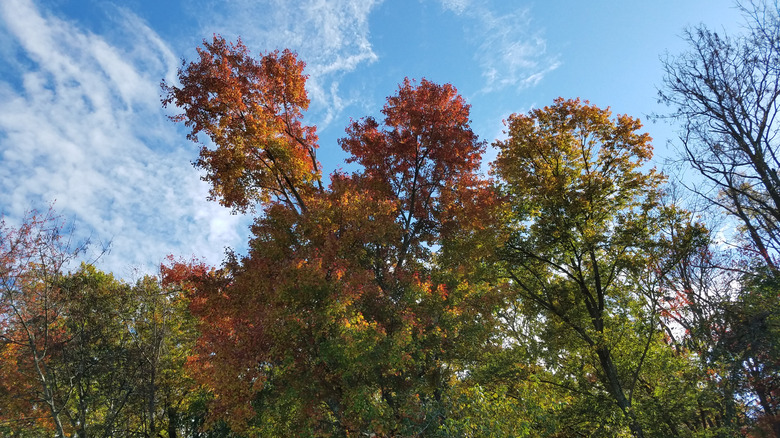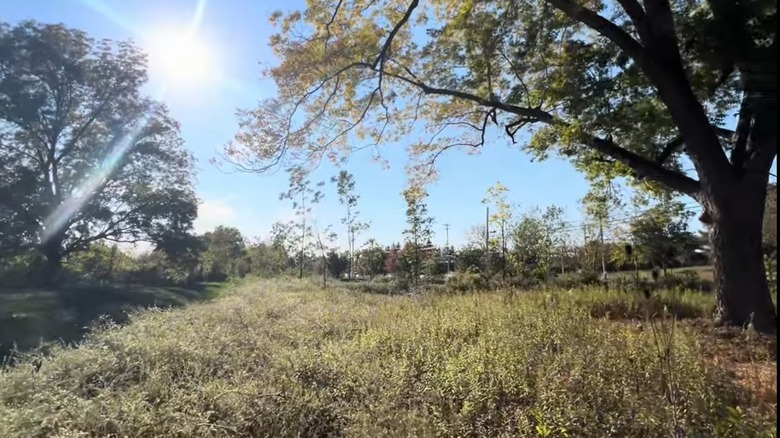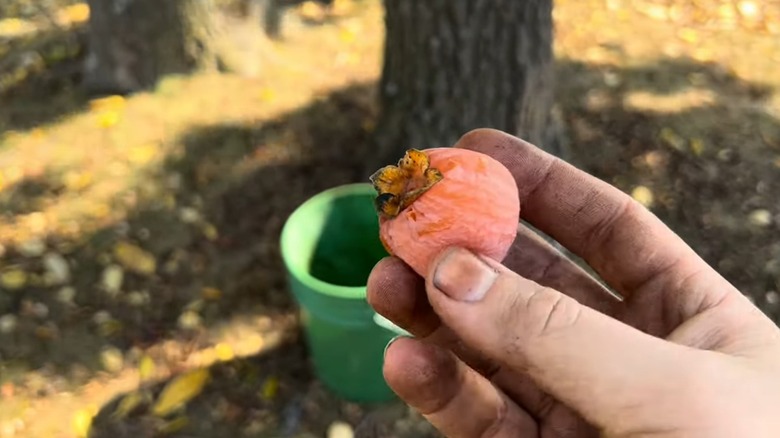Pennsylvania's Unique, Historic 'Food Forest' Is A Flourishing Garden Of Eden In The Philly Metro Area
The sprawling metropolis of Philadelphia is a historic center filled with many of America's first and oldest sites. In Philly, you can walk down Elfreth Alley, the nation's oldest street, and be transported back in time. But the City of Brotherly Love also has a gruff reputation that has made Philadelphia one of the most underrated cities in America. So, it may surprise visitors to learn that one of the country's best botanical gems is hiding in plain sight in the Philadelphia metropolitan area.
The John Hershey's Nut Tree Nursery isn't so much a place as an idea. One that has seeded hundreds of trees to become America's oldest "food forest." More than a century of flourishing fruit and nut trees sprawling over dozens of acres, now tucked in private gardens and standing on public streets. It's easy to overlook this botanical treasure, but once you know it exists, you'll marvel at the cornucopia before you.
The best way to visit this food forest is on a trip to Downingtown, Pennsylvania. You can get there in an hour's drive from downtown Philadelphia or about an hour and a half by train. On the journey in, keep an eye out and see which botanical treasures you can spot along the way.
Discovering John Hershey's Nut Tree Nursery
It started with 8 acres of land and a vision: to grow food in an edible forest, which was then known as Hershey's farm. (Not to be confused with Hersheypark, Pennsylvania's largest amusement park.) In 1921, agriculturist John Hershey wanted to test his idea of growing edible crops as part of a planned forest. He seeded a nursery of nut and fruit trees in Downingtown, selecting only the sweetest and most productive trees: Thin-shelled pecans that are easy to crack open, juicy mulberries, sweet acorns, and, perhaps best of all, honey locust pods. The thorny honey locust is an indigenous tree that produces a sweet pod, similar to carob, whose pulp can be made into a maple-like syrup.
The easiest way to see these trees is to head to the Downingtown United Methodist Church on Lancaster Avenue. At this corner, and across the street at Downington Friends Meeting, you'll notice tall trees planted in straight lines, their trunks scarred by horizontal lines. These lines were caused by Hershey's grafting technique, combining the branches of one species of tree to join it with another, similar, varietal to produce a new one.
Then, walk east along Lancaster Avenue before turning south onto Woodbine Road. As you approach Bishop Shanahan High School, imagine Hershey Farm as it was originally planted: On the forest floor, pigs foraged for acorns and persimmons while chickens pecked at mulberry and paw paw. While the tallest nut trees provided shade, the smaller trees and shrubs supplied fruit and berries to feed animals as well as people.
The heritage of the Hershey food forest
Sadly, much of Hershey's food forest has been swallowed by suburban development. About 72 acres of the remaining trees are in a private neighborhood in nearby Guhtriesville. However, the local Downingtown Tree Commission is working to save what trees remain and plant more. The North American Land Trust is also expanding Hershey's legacy to plant more of these types of trees in the nearby Brinton Run Preserve in Chadds Ford.
Hershey's legacy of food forestry lives on, however. Fruit growers, nut farmers, and others interested in growing edible forests continue to visit and marvel at his work. Foraging fans, like Northeast Edible, still visit Hershey's trees to pluck fallen persimmons and other fruits. Furthermore, tree enthusiasts are often moved by Hershey's efforts, planting black walnut seedlings derived from the orchard. "It makes me think, you know, how meaningful it is to plant trees," one content creator and farmer said of the place in a video on Youtube. "And knowing that I'm hopefully taking steps towards leaving something behind for future generations."
After learning of Hershey's botanical legacy, it may not be a surprise to learn that Philadelphia is America's Garden Capital, with plenty more green spaces to see. But did you know that it's also home to the Mushroom Capital of the world? Despite its gruff reputation, it seems Philly has plenty for foodies and nature lovers to explore.


